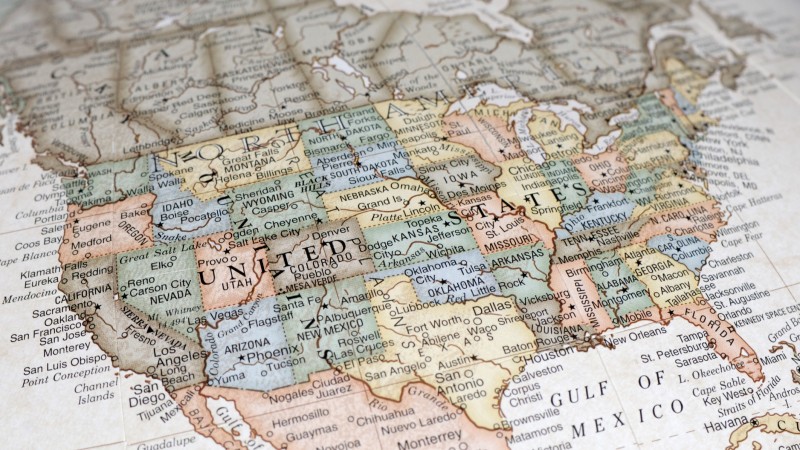Addressing the nationwide maldistribution of psychiatrists
MDlinx Sep 08, 2022
Prior to the COVID-19 pandemic, just 11% of American adults were experiencing symptoms of anxiety and depression. But once COVID-19 set in, that number rose to 40%, according to an article published by the AAMC.
Weiner S. A growing psychiatrist shortage and an enormous demand for mental health services. Association of American Medical Colleges. August 9, 2022.

Put simply, the US doesn’t have enough psychiatrists to manage its population’s overwhelming mental health demands, especially in rural parts of the country. As a result, primary care physicians (PCPs) are treating more mental health patients and implementing healthcare technologies.
This isn’t news. But the shortage is coupled with maldistribution of psychiatrists across the US—creating greater access to care in some places more than others.
Where psychiatrists work in the US
According to a report by the University of Michigan’s School of Public Health Behavioral Health Workforce Research Center, most general psychiatrists in the US work in the Northeast or on the West coast.
Beck AJ, Page C, Buche J, et al. Estimating the distribution of the U.S. psychiatric subspecialist workforce. School of Public Health at University of Michigan. December 2018.
In terms of statewide coverage, California, New York, and Texas had the highest number of practicing psychiatrists, while Wyoming, Montana, and Alaska had the least at the time of the report. California had 5,935 practicing psychiatrists, while Wyoming had just 42.
The issue of maldistribution becomes clearer when we look at counties rather than states.
For example, there are 3,135 counties in the US. As per the data, only 1,446 (46.1%) of these counties have at least one psychiatrist. The majority, however, do not.
According to the report, New York, NY, was the county with the most psychiatrists (1,802), followed by Los Angeles, CA (1,534), Cook, IL (918), and Middlesex, MA (770).
The counties that psychiatrists tend to flock to are largely metropolitan. This dynamic diminishes access to psychiatric services for people living in rural and low-income urban areas, according to an article published by Focus.
Mongelli F, Georgakopoulos P, Pato MT. Challenges and opportunities to meet the mental health needs of underserved and disenfranchised populations in the United States. Focus. 2020;18(1):16–24.
The authors elaborated on the issue of access, writing, “Patients living in such underserved areas represent a significant proportion of the US population and face disproportionally unfavorable health outcomes. This is partially due to their inability to easily access preventive and maintenance health services.”
How doctors are problem-solving
As the need for psychiatric services grows, doctors are exploring their options in order to ensure the best care for patients everywhere.
According to the AAMC article, there are three actions doctors may take to increase access to psychiatric care in underserved communities:
Use telehealth. Making use of telehealth can create opportunities for patients who wouldn’t normally have access to psychiatric services.
UC San Diego Health psychiatrist Jessica Thackaberry, MD, treated a patient for anxiety via telehealth. According to Dr. Thackaberry, without that service, the patient “would have wound up in an inpatient facility far from his family.” Telemedicine enabled her to adjust his medication remotely, allowing him to remain in the comfort of his home.
Telehealth can also reduce physician burnout by diminishing commute times and facilitating interactions with a diverse patient pool you may not normally treat in an office.
Employ digital self-paced modules. Some experts believe that implementing digital self-paced modules, such as a cognitive behavioral therapy (CBT) program, could help patients access care while freeing up your time.
With this format, a patient may take the CBT training and then follow up with their psychiatrist for a 20-minute visit, giving you time to check in with a greater number of patients.
Collaborate with PCPs. Experts believe that “meeting patients where they’re at” means creating access in their PCP’s office. According to the AAMC, PCPs treat up to 60% of patients who receive mental healthcare.
Consider the Collaborative Care Model approach, in which the PCP confirms a patient has anxiety or depression.
They then walk that patient to a behavioral care manager (BCM) to talk further about their symptoms. The BCM provides therapy and checks in as needed. This team meets up approximately once a week to discuss the patient’s needs with an affiliated psychiatrist, who can then prescribe appropriate medications.
What this means for you
Since the COVID-19 pandemic emerged, adults in the US have experienced increasing rates of mental illness. Not only is there a psychiatrist shortage, but also a notable maldistribution of psychiatrists, with the majority of US psychiatrists working in the northeast and along the west coast. Patients living in more rural areas tend to have the least access to psychiatry services. Doctors may create greater access to psychiatric care by using telehealth, employing self-paced digital modules, and collaborating with PCPs.
-
Exclusive Write-ups & Webinars by KOLs
-
Daily Quiz by specialty
-
Paid Market Research Surveys
-
Case discussions, News & Journals' summaries